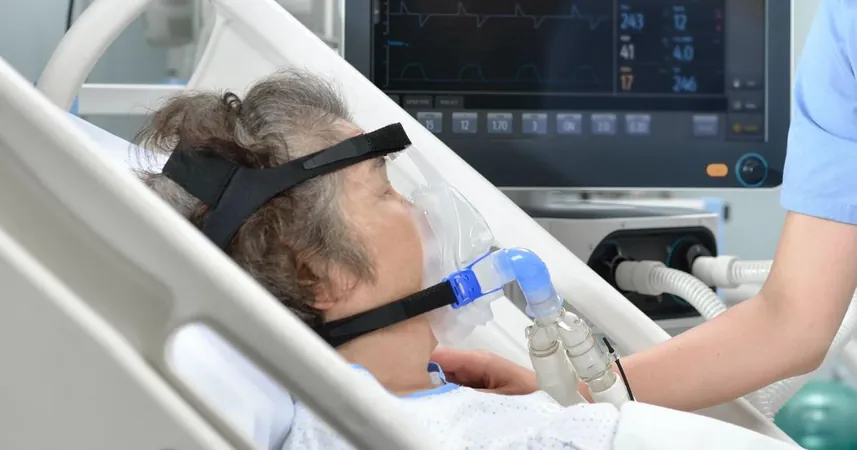
Revolutionary Alert System Combined with CAD Software Cuts Treatment Time for Pneumothorax in Half!
2024-11-19
Author: Sarah
Introduction
Recent findings reveal that an innovative electronic notification system (ENS) integrated with computer-aided detection (CAD) software can significantly expedite treatment for pneumothorax—often a life-threatening condition where air leaks into the space between the lung and chest wall. This exciting breakthrough could change the game for emergency medical responses.
Study Findings
A comprehensive study analyzing a commercially available CAD designed for identifying pneumothorax through chest X-rays indicates that the integration of this system with ENS can nearly cut the time it takes to start treatment by 50%. By enhancing communication between radiologists and referring physicians when potential issues are detected, this dual system promises to enhance patient care and lead to better clinical outcomes.
Importance of Timely Communication
Pneumothorax is among the critical conditions highlighted by the American College of Radiology that necessitates immediate communication between radiologists and treating physicians to prevent a patient's condition from worsening. However, as noted by Dr. Si Nae Oh from the National Health Insurance Service Ilsan Hospital in South Korea, delays often occur in clinical settings when radiologists are tasked with interpreting chest X-rays promptly and accurately.
Previous Studies
Previous studies have demonstrated that CAD systems enhance detection rates for time-sensitive cases like pneumothorax. Yet, until now, little was known about their impact on accelerating patient management timelines. Researchers embarked on a mission to assess the efficiency of this combined system in real-world clinical environments.
Study Design and Results
In a study conducted at an 818-bed general hospital, 33 physicians and their residents were tasked with utilizing both CAD and ENS, while another group of 155 providers relied on CAD alone. The results were staggering—over 600,000 chest X-rays were analyzed, with a mere 2.0% showing signs of pneumothorax. The CAD and ENS duo reduced time-to-treatment with supplemental oxygen from an average of 277.8 minutes down to just 143.8 minutes, showcasing both systems’ effectiveness in the crucial early stages of care. However, more invasive treatments such as aspiration and tube-thoracostomy did not see a significant time reduction.
Conclusion and Future Directions
The authors of the study highlighted that while previous assessments of CAD’s role in pneumothorax detection did not correlate to faster treatment times, the integration of the electronic alert system acted as a vital catalyst in improving communication, thereby accelerating the treatment process and enhancing patient outcomes. Looking ahead, researchers suggest that future investigations could explore the possibility of using such systems as independent readers within clinical settings, potentially revolutionizing how emergency cases, like pneumothorax, are managed.
Significance of the Study
This groundbreaking study underscores the importance of technological advancements in healthcare, particularly in emergencies where every minute counts. The full study abstract has been published in the Journal of the American College of Radiology, shedding light on the potential of smart technology in saving lives.


 Brasil (PT)
Brasil (PT)
 Canada (EN)
Canada (EN)
 Chile (ES)
Chile (ES)
 Česko (CS)
Česko (CS)
 대한민국 (KO)
대한민국 (KO)
 España (ES)
España (ES)
 France (FR)
France (FR)
 Hong Kong (EN)
Hong Kong (EN)
 Italia (IT)
Italia (IT)
 日本 (JA)
日本 (JA)
 Magyarország (HU)
Magyarország (HU)
 Norge (NO)
Norge (NO)
 Polska (PL)
Polska (PL)
 Schweiz (DE)
Schweiz (DE)
 Singapore (EN)
Singapore (EN)
 Sverige (SV)
Sverige (SV)
 Suomi (FI)
Suomi (FI)
 Türkiye (TR)
Türkiye (TR)
 الإمارات العربية المتحدة (AR)
الإمارات العربية المتحدة (AR)